Climate Change Threatens Health of Pacific Island Nations
As storms grow stronger, communities and public health infrastructure are at risk.
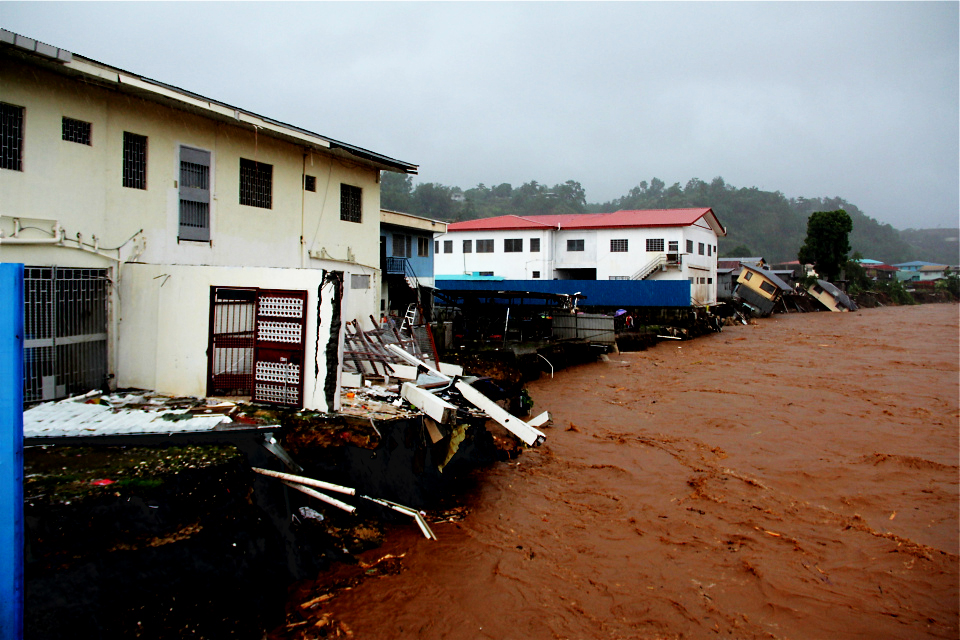
Over a period of three days in April 2014, more than 600 millimeters of rain fell on Honiara, the capital of the Solomon Islands. The storm exposed severe vulnerabilities in the city’s health infrastructure, of which 75 percent is located in areas vulnerable to damage by a future flood event. Photo © Eileen Natuzzi
By Codi Kozacek, Circle of Blue
In the urgent campaign to cut carbon emissions and curb global warming, perhaps the most poignant call to action are images of rising sea levels gnawing away at isolated, low-lying Pacific islands where citizens could lose their countries. But long before the last scraps of land succumb to the great ocean, fiercer storms brought on by climate change could hobble the health infrastructure of island nations and exact a steep toll in human lives, according to a study published this week in the American Journal of Tropical Medicine and Hygiene.
The study examines the aftermath of a storm that hit Honiara, the capital of the Solomon Islands on Guadalcanal, in April 2014. More than 600 millimeters (24 inches) fell in three days; rivers overtopped their banks and sent water gushing into riverside neighborhoods. Floodwaters also inundated three of the city’s nine health clinics, and prompted the evacuation of patients from several of the wards at the National Referral Hospital, the country’s top medical center. All told, the floods killed 21 people directly and 10 more in the outbreak of infectious diarrhea that followed. Per capita, it was the deadliest single event disaster in 2014.
In the Path of the Storm
The storm’s devastation, and particularly the damage to Honiara’s health system, was the result of a confluence of social and environmental factors that is putting island communities across the Pacific at greater risk.
First is the spread of informal settlements into river floodplains and areas that are vulnerable to storm surge. In Honiara, approximately 30 percent of the city’s population lives in areas at risk from floods. Residents in these communities were 23 times more likely to suffer injury or death during the 2014 storm than those who lived farther away from waterways, the study found. It also noted that many of the homes in the informal settlements are built with traditional materials like cardboard, leaf, and plastic, compounding the risk of damage in the event of a flood.
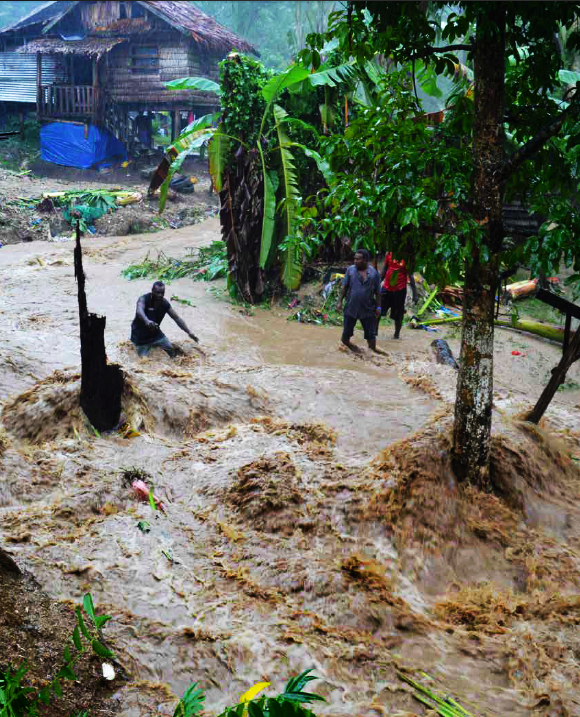
As the populations of Pacific Island cities continue to grow, more and more homes are being built in areas vulnerable to floods and tropical storms, which are expected to become more severe under climate change. Photo © Ministry of Climate Change and Natural Disasters
Second, critical infrastructure is often sited in flood-prone areas. Three-quarters of Honiara’s health infrastructure—including the hospital, clinics, and medical supply stores—are susceptible to floods, the study found. During the storm in 2014, the pediatric, maternal, and neonatal wards of the National Referral Hospital, which is located near the water, were evacuated due to damage sustained in the storm surge.
“I’d been going [to the hospital] for 12 years, and I always thought how beautiful it was after stepping out of the operating center and looking out at the sea,” Eileen Natuzzi told Circle of Blue. Natuzzi is the leader of the study and a general surgeon and public health researcher at San Diego State University’s Graduate School of Public Health. “After being there for the floods, my entire perspective changed. I saw everything to be highly vulnerable and frightening, to be honest with you. I had a mind reset.”
The storm also knocked out electricity, damaged bridges and roads, and disrupted sewage and water services. In addition, the floods reached the island’s international airport, delaying the delivery of outside aid to the storm’s victims.
Third, the high volume of floodwaters coupled with storm damage to water and wastewater infrastructure can create ideal conditions for the spread of disease. The study attributes the outbreak of infectious diarrhea after the 2014 storm, which sickened more than 3,800 people, to the contamination of city drinking water by sewage and floodwaters. Limited resources on the island hampered treatment of the outbreak. Hospital occupancy rates increased dramatically in the month following the storm, and supplies including intravenous fluids were exhausted.
High Risk
Climate change is accelerating the risks to communities and infrastructure that are already vulnerable to floods. While scientists say it is difficult to attribute individual storms to human influences, there is evidence that the intensity of tropical cyclones could increase as much as 11 percent by the end of the century. These stronger storms are expected to become more common, even as the frequency of cyclones overall is projected to decline.
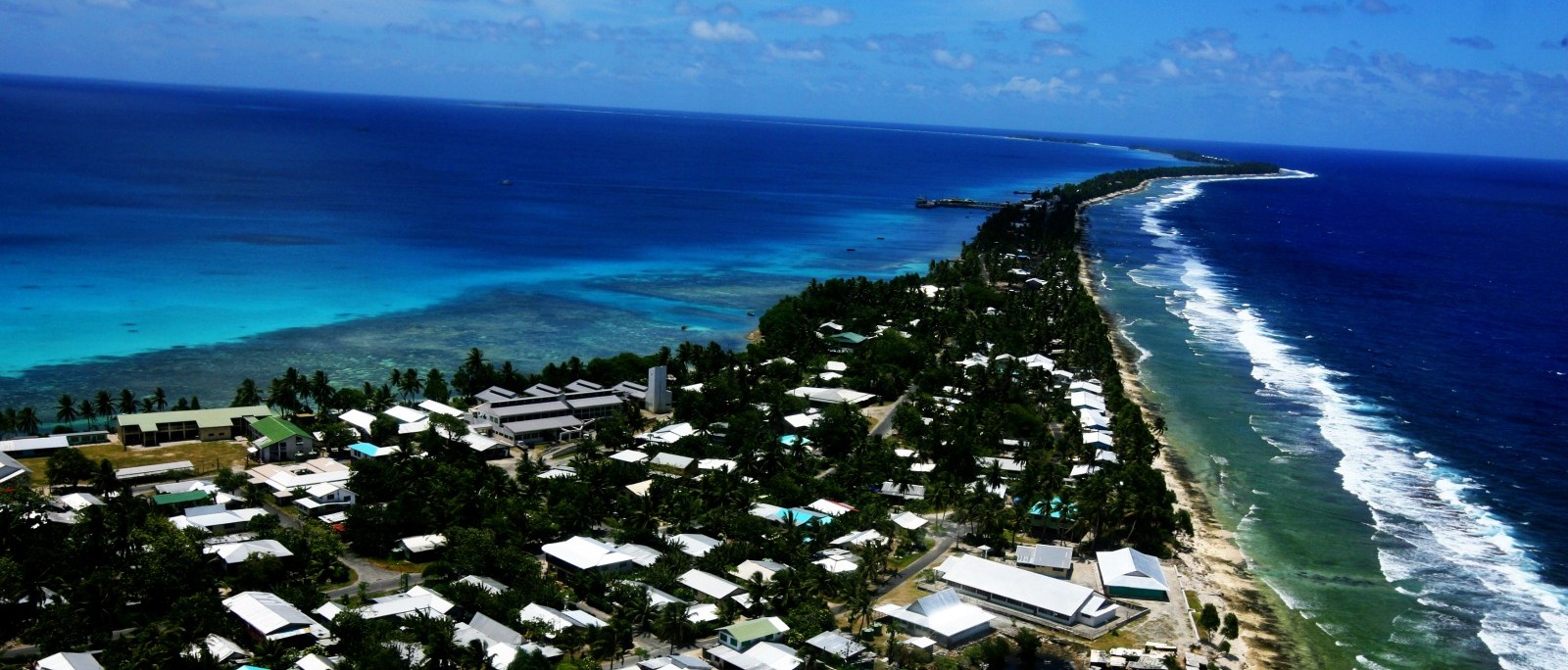
A combination of high exposure to natural hazards and limited economic and institutional capability to prepare for and respond to emergencies makes Pacific Island nations particularly vulnerable to natural disasters. Photo courtesy Global Environment Facility via Flickr Creative Commons
Strong storms over the past year have shown how immense the damage can be in these nations. The 2015 cyclone season, which broke records in the Pacific for both the high number and strength of the storms, spawned the devastating Cyclone Pam. The category 5 storm was one of the strongest ever recorded in the South Pacific and wrought widespread destruction in Vanuatu. It was followed less than a year later by Cyclone Winston, another category 5 storm that killed 42 people and displaced more than 50,000 in Fiji.
Adaptation is Key
Reducing the risks from these storms to public health in the Pacific Islands will require big financial and political commitments, as well as a shift in thinking about development, according to Eileen Natuzzi. First and foremost is the need to move critical health infrastructure away from danger zones. In Honiara, that would mean relocating the National Referral Hospital to safeguard its capacity to deliver care in an emergency.
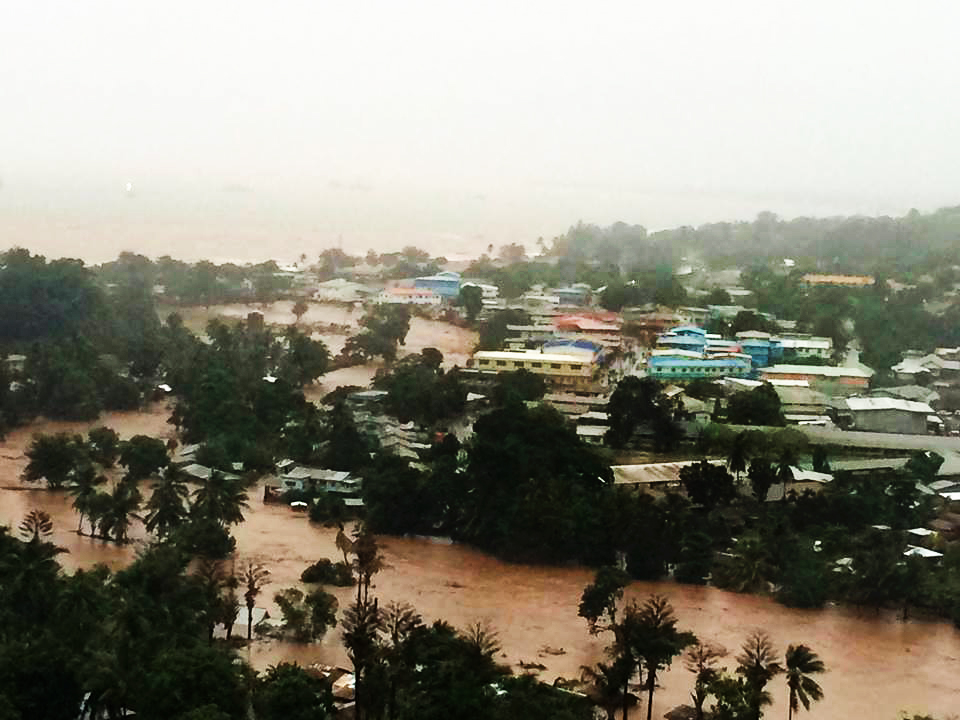
“It’s logical in developing island countries to have everything close to the coast because that’s where the access is,” Natuzzi added. “It’s illogical as the climate is changing to leave them there.”
Moving the hospital is a costly undertaking—a multi-million dollar project—and will likely require support from outside the Solomon Islands. The nation had a GDP of $US 1.1 billion in 2014, according to the World Bank, an amount less than most U.S. cities.
Equally important is moving vulnerable neighborhoods and informal settlements away from floodplains. This could be more difficult to do because it will require changing attitudes toward land use, poverty, and population growth, according to Natuzzi. These types of policy shifts can only be made internally, she said, but there is a real chance for growing urban areas in the Pacific to develop in ways that build their resilience to storms and rising seas.
“You can’t move New York City. It’s too late, there’s too much invested in it. It’s too fixed,” Natuzzi said. “For some of the small Pacific Island urban environments, they’re not fixed. They’re potentially malleable. But it’s going to take commitment and education, and partnerships and funds, to make those changes.”
A news correspondent for Circle of Blue based out of Hawaii. She writes The Stream, Circle of Blue’s daily digest of international water news trends. Her interests include food security, ecology and the Great Lakes.
Contact Codi Kozacek

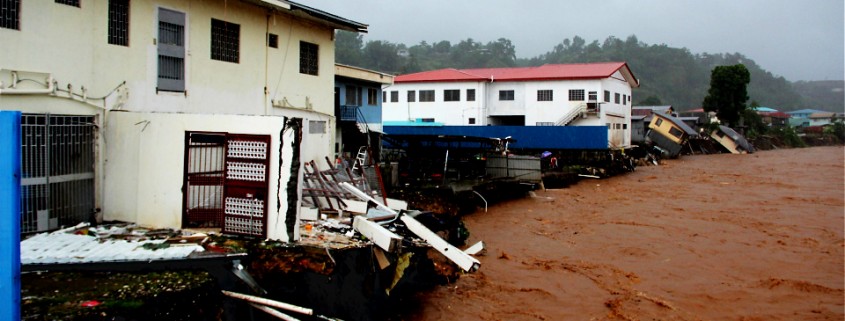

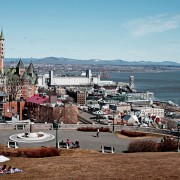

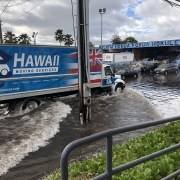





Leave a Reply
Want to join the discussion?Feel free to contribute!